Thanks for the congratulations unicorn. And yeah I'm excited for college even with this covid thingy going on.
I agree with you as well, if I do the surgery in my 20s and things go south it would make up a rather big portion of my overall life at the time compared to a later age.
Hopefully to be safe I'll be doing it at 25 with an American doctor for sure and with an fda approved nail.
As you point out, timing and money is important, I hope you can get back on your feet soon. 4 years is long overdue.
Best wishes unicorn
Yes, and actually this thinking does apply to our actual leg lengthening height goal as well. If you had your surgery at a very young age, and if something goes wrong, it represents a major chunk of your life that you cannot afford to miss. Similarly, people tend to underestimate their lengthening height goal compared to their original starting height. It really could be that additional 5mm that push you over to the danger zone. So why is your height goal relative to your starting height that important?
Contractures.Our bodies, skins and soft tissues cannot be lengthened so linearly and systematically as our bones. In fact, I would always say that leg lengthening should be divided into 2 vital parts:
1 - Bone lengthening
2 - Soft tissue lengtheningWhen you start your LL process, as challenging as it is, you make your bones longer by adjusting and lengthening 1mm per day etc. After a good 2-4 weeks or so, when your body has healed from the surgical wounds, the actual lengthening act itself doesn't hurt much anymore.
However, do you know your body can't necessarily catch up to this rate of lengthening? That's why they advise you to stretch and improve flexibility as much as possible prior to lengthening, and do a lot of physio and stretches during and after lengthening.
Most people are concerned about muscle atrophy but actually, that itself is not even such a big deal compared to a permanent duck ass, knock knees, inward turning toes and hunching. That's why a 7cm lengthened leg represents a significantly different risk if your starting height is 150cm vs 180cm (yes, I have met people who are 180cm who aspire to be taller because the society they live in has a higher average height and who are we to judge anyway?).
One of my earliest mistakes was ignoring the many experienced lengtheners who posted on this forum 5 years ago stating that 6-7cm is the limit for femur lengthening before the risks snowball beyond your control thereafter. Nobody had explained to me, much less Guichet nor my physiotherapist, that our soft tissues represent a major hurdle to recovery.
Here are the symptoms of shorter soft tissues during FEMUR lengthening (since I've zero experience with tibias) :
IT BAND (a hybrid ligament-tendon that CANNOT lengthen, situated on the side of your thighs)The moment your femur bone is longer than your IT band, you become a wonky marionette puppet. Your shorter IT band will be pulling your legs apart at all times. I couldn't get my legs to close even after 1cm of femur bone lengthening. And because it is a soft tissue that CANNOT lengthen but can be stretched a bit, doctors resort to releasing it surgically like they did to mine to solve the problem.
Because my femur had runaway to 10cm length when my starting height was merely 158cm, my NHS doctor concluded that all the physio in the world wasn't going to ever lengthen my IT band to match that 10cm. And miraculously, the moment she released (trim/cut) my IT band at surgery, I could finally close my legs together again.
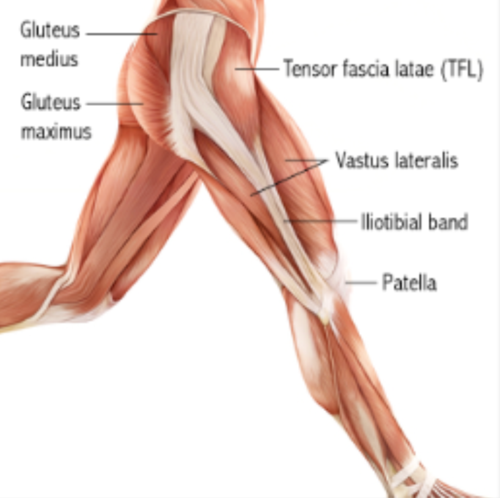 PSOAS (Hip Flexor Muscles)
PSOAS (Hip Flexor Muscles)This is a vital muscle that literally connects your spine to your legs so that you can effectively lift up your leg and walk. It's vital because our bones are just building blocks. They're actually quite useless if we don't have muscles to animate them.
So imagine, when your psoas muscle is shorter than your femur bone, your body literally folds (hunches) because suddenly there's not enough soft tissue to let you stand up straight. And worse, your back arches painfully creating duck ass (lordosis) which will turn your knees inwards (valgus).
The good news is the psoas is a muscle that can lengthen over time with diligent physiotherapy but unlike bone lengthening, there is no linear timing and results. So I always tell people to bear in mind that while the doctors promise a 3-month recovery period, you could resemble a
quasimodo donald duck for longer than expected if you're not careful. And this is the part the doctors might downplay because hunching for a long time might not be a condition you can afford to have if you had a job to keep or to function normally in society.
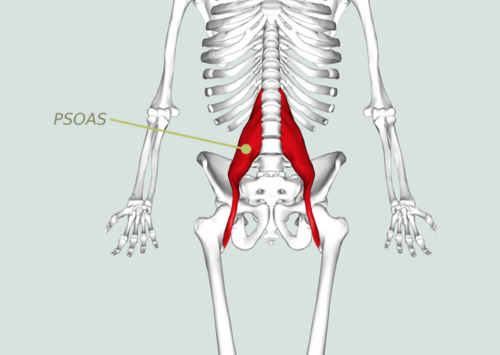
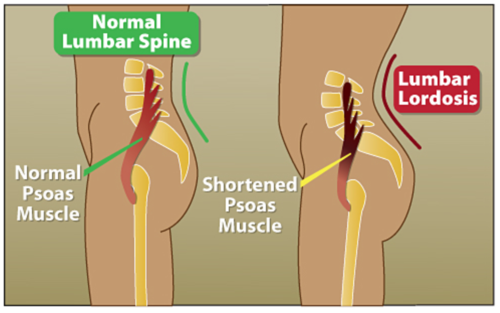 QUADS & HAMSTRINGS
QUADS & HAMSTRINGSDitto, these yield the same domino effects like short psoas, when they're too short for your femur bones. Imagine that you're wearing a full body suit from neck to toe that is too small and unstretchable. You'll have to contort and bend to fit in it. Same thing here.
Hence, this is the reason why if you're preparing for LL, you absolutely need to give yourself the maximum chances to succeed. Short of controlling your bone lengthening, soft tissue lengthening is something you can actively work on yet not fully control.
Once you're done with your bone lengthening and you're no longer with your lengthening doctor - don't be surprised that your body hasn't automatically bounced back to pre-LL condition: ability to stand up straight, loss of muscle mass and stamina.
All the short soft tissue symptoms (actually, let's not blame our soft tissues for being short because relatively speaking, it's our femurs that got longer) - can be further aggravated if no adequate/disciplined physio is done to stretch them properly; potentially causing longer term back pain, groin pain, pelvic pain, knee pain, calf pain and more.
Because you can see that anatomically speaking, we're simply an interconnected marionette doll. Our bones are the stick figures that represent us, which are completely useless if there're no strings to pull and animate us. And these strings are our soft tissues. That's why they're so vital to our lengthening process.
Does this make sense? In my humble opinion, lengthening should be divided in 2 parts: bone lengthening and soft tissue 'lengthening' to match. Otherwise, you'd be setting off a chain of events that will inevitably cause havoc to your poor unwitting body!
BEFORE AND AFTER MY SURGICAL SOFT TISSUE RELEASEHUNCH & DUCK ASS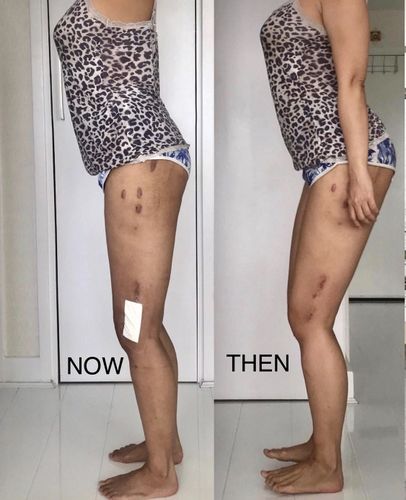 VALGUS
VALGUS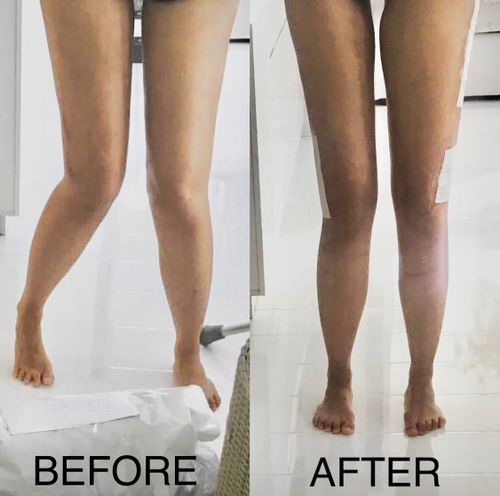

 Author
Topic: UNICORN - Dr. Guichet Internal Femurs 8cm - Summer 2016 (Read 255887 times)
Author
Topic: UNICORN - Dr. Guichet Internal Femurs 8cm - Summer 2016 (Read 255887 times)
